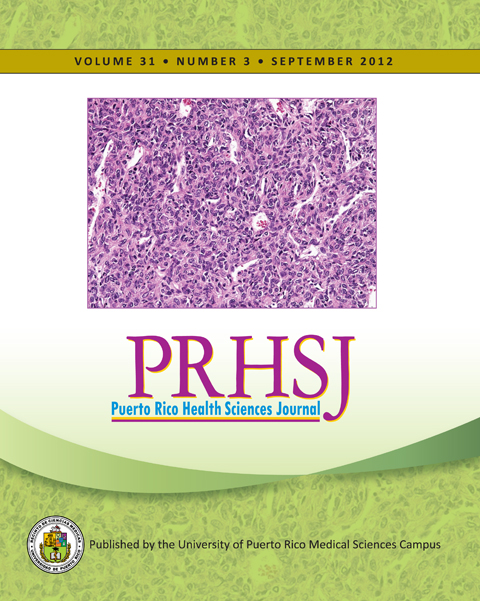Abstract
Objective: This study evaluated correlates of the metabolic syndrome among adults living in Puerto Rico, a Hispanic subpopulation disproportionately affected by diabetes. Methods: A probability cluster design was used to select a sample of households of the San Juan Metropolitan Area in Puerto Rico. A total of 858 persons aged 21–79 years completed a face-to-face interview, blood pressure and anthropometric measurements, blood sampling and spot urine. Logistic regression was employed to assess correlates of the metabolic syndrome. Results: Of 368 (42.9%) of adults who met the criteria for metabolic syndrome, elevated fasting glucose (49.8%), abdominal obesity (48.6%), and reduced HDL cholesterol (45.8%) were the most prevalent diagnostic criteria. In a multivariable logistic model that simultaneously adjusted for sociodemographic characteristics and health behaviors, older age, high school educational attainment or less, no alcohol intake, and lack of moderate-to-vigorous physical activity remained significantly (p < 0.05) associated to the metabolic syndrome. However, the associations for male gender, some college education, and current smoking ≥20 cigarettes/day had borderline significance. Further controlling for inflammatory markers slightly attenuated the strength of most of these associations but remained significantly (p < 0.05) associated to the metabolic syndrome with only a few exceptions. Middle and upper tertiles of hs-CRP, fibrinogen, and PAI-1 and an elevated albumin-to-creatinine ratio were also associated (p < 0.05) with the metabolic syndrome. Conclusion: Enhancing public education regarding modifiable risk factors for the metabolic syndrome and providing optimal medical management of individual metabolic disturbances among those at risk through preventive lifestyle changes should be placed as a public health priority for Puerto Rico.
Authors who publish with this journal agree to the following terms:
a. Authors retain copyright and grant the journal right of first publication with the work simultaneously licensed under a Creative Commons Attribution License that allows others to share the work with an acknowledgement of the work's authorship and initial publication in this journal.
b. Authors are able to enter into separate, additional contractual arrangements for the non-exclusive distribution of the journal's published version of the work (e.g., post it to an institutional repository or publish it in a book), with an acknowledgement of its initial publication in this journal.
c. Authors are permitted and encouraged to post their work online (e.g., in institutional repositories or on their website) prior to and during the submission process, as it can lead to productive exchanges, as well as earlier and greater citation of published work (See The Effect of Open Access).
